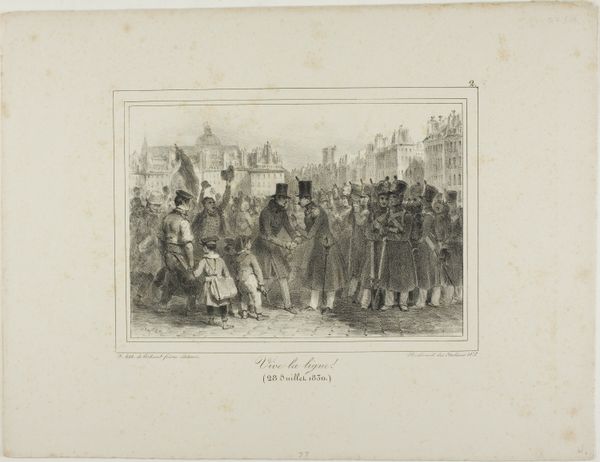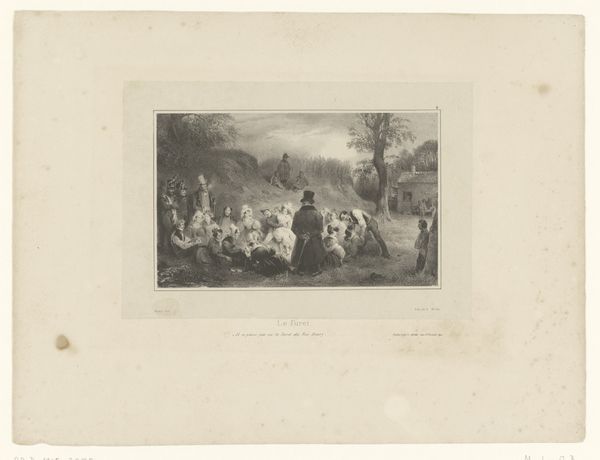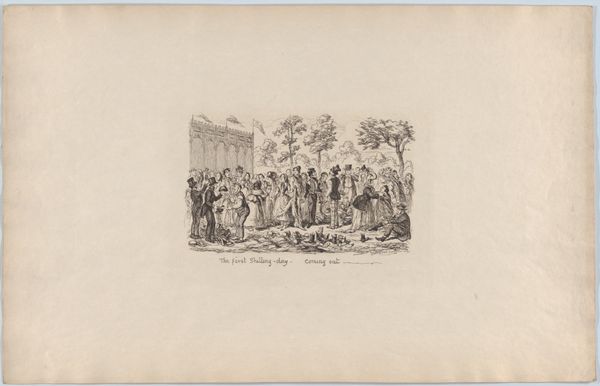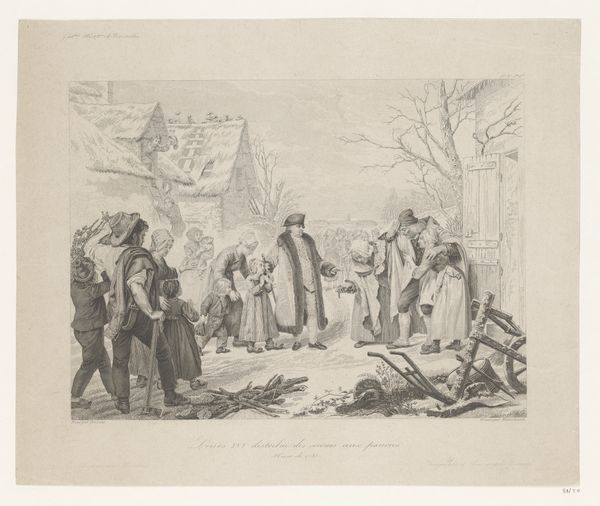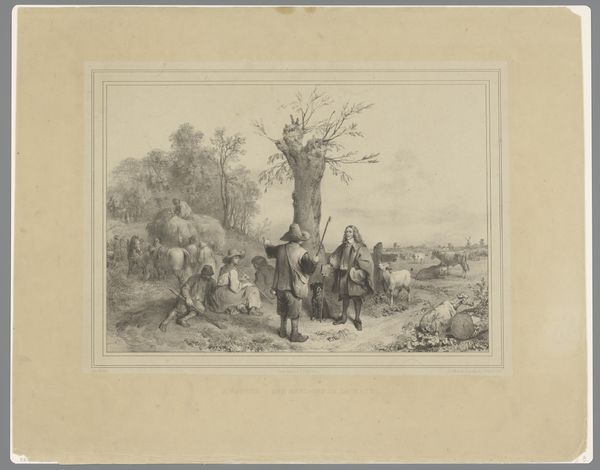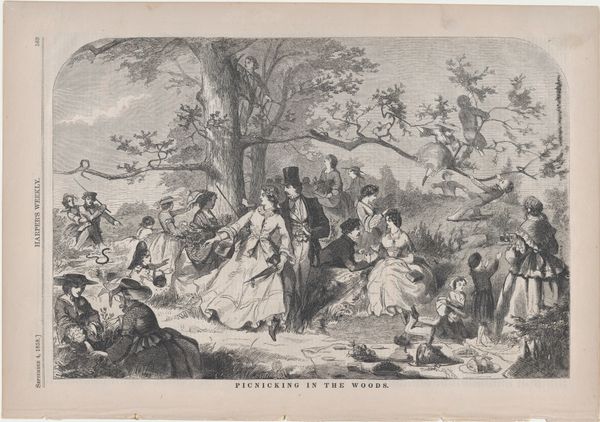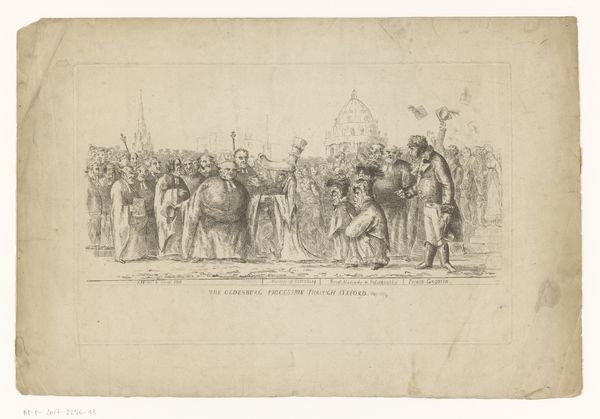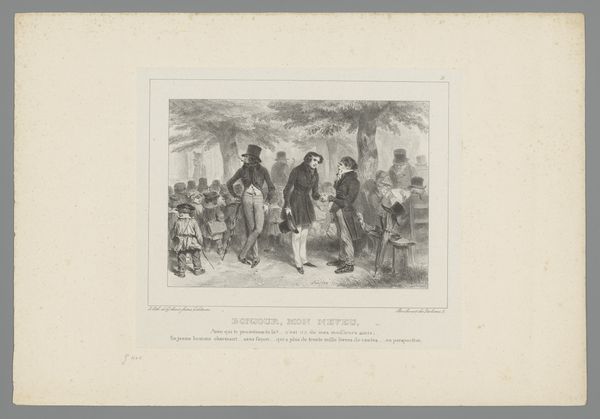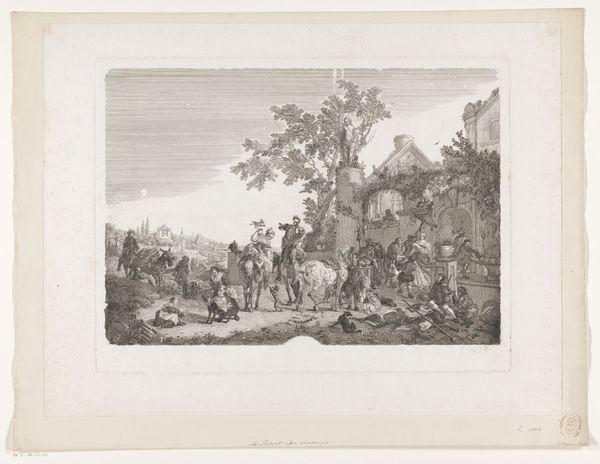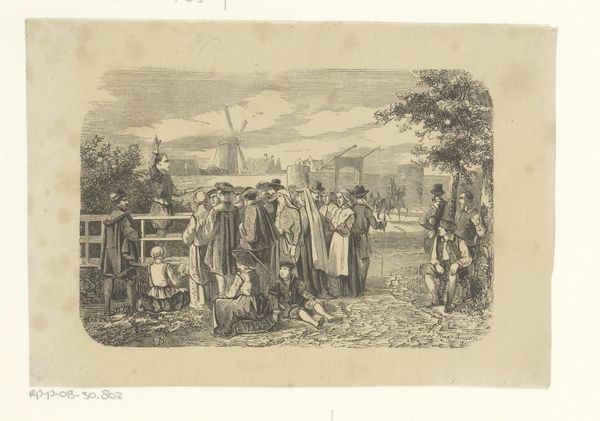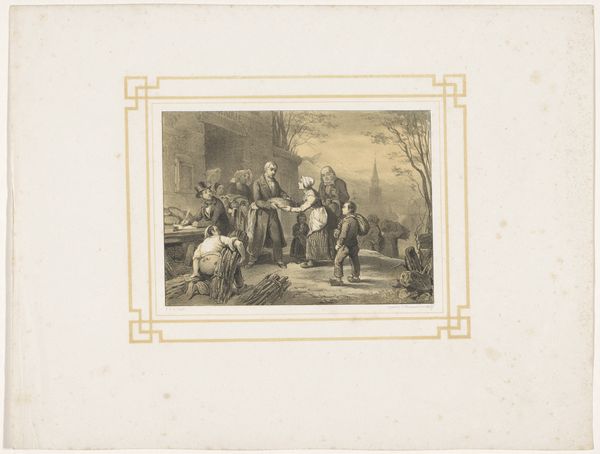
Adam Frans van der Meulen bij het beleg van Valenciennes 1838 - 1842
0:00
0:00
jeanbaptistemadou
Rijksmuseum
Dimensions: height 445 mm, width 560 mm
Copyright: Rijks Museum: Open Domain
Editor: We're looking at "Adam Frans van der Meulen at the Siege of Valenciennes," an etching made between 1838 and 1842, after Jean-Baptiste Madou. There’s almost a storybook quality to it. It depicts a lot of figures in a winter landscape surrounding what appears to be a military encampment. What are your thoughts when you look at it? Curator: Storybook, yes! There’s a miniature feel. It's the 19th century looking back to the Baroque, a moment of immense power play and courtly drama reimagined. Think of the figures as actors on a tiny stage, frozen mid-scene. See how the leafless trees claw at the sky – adding to this sense of tense anticipation. How does the composition strike you? Editor: The busyness is a bit overwhelming, to be honest. My eye doesn't really know where to land, except maybe the gesturing figure. Curator: Exactly! That pointing, assertive gesture pulls us in, doesn’t it? Classic Baroque device – dramatic focal points in compositions loaded with detail. Notice the contrast between the immediacy of the encampment and the hazy distant battlefield. What might that suggest about the artist's perspective, or Madou's choices? Editor: That the actual conflict is somewhat distant. It’s not romanticized, yet maybe still... abstracted? More of a spectacle. Curator: A spectacle carefully curated! Maybe Madou wants to capture history's grand theatre but keep the grit at arm’s length, a story softened by time, like a legend being retold. This isn’t just war; it’s history becoming myth. I love how they transformed van der Meulen's historical depictions. So what new things you have learned today? Editor: How the historical distance in both time and representation impacts the reading of the artwork. And how easily the Baroque aesthetic lends itself to drama. Thanks for sharing this unique perspective!
Comments
No comments
Be the first to comment and join the conversation on the ultimate creative platform.
